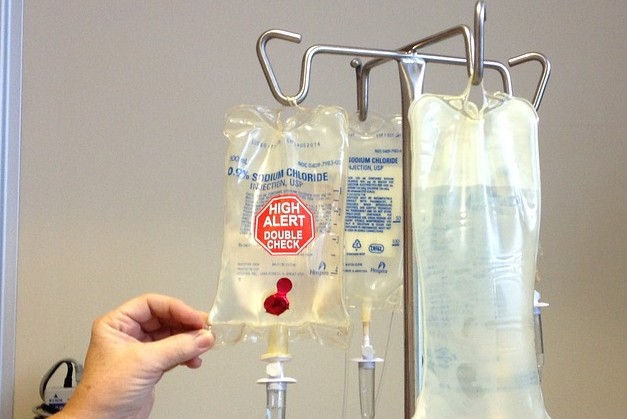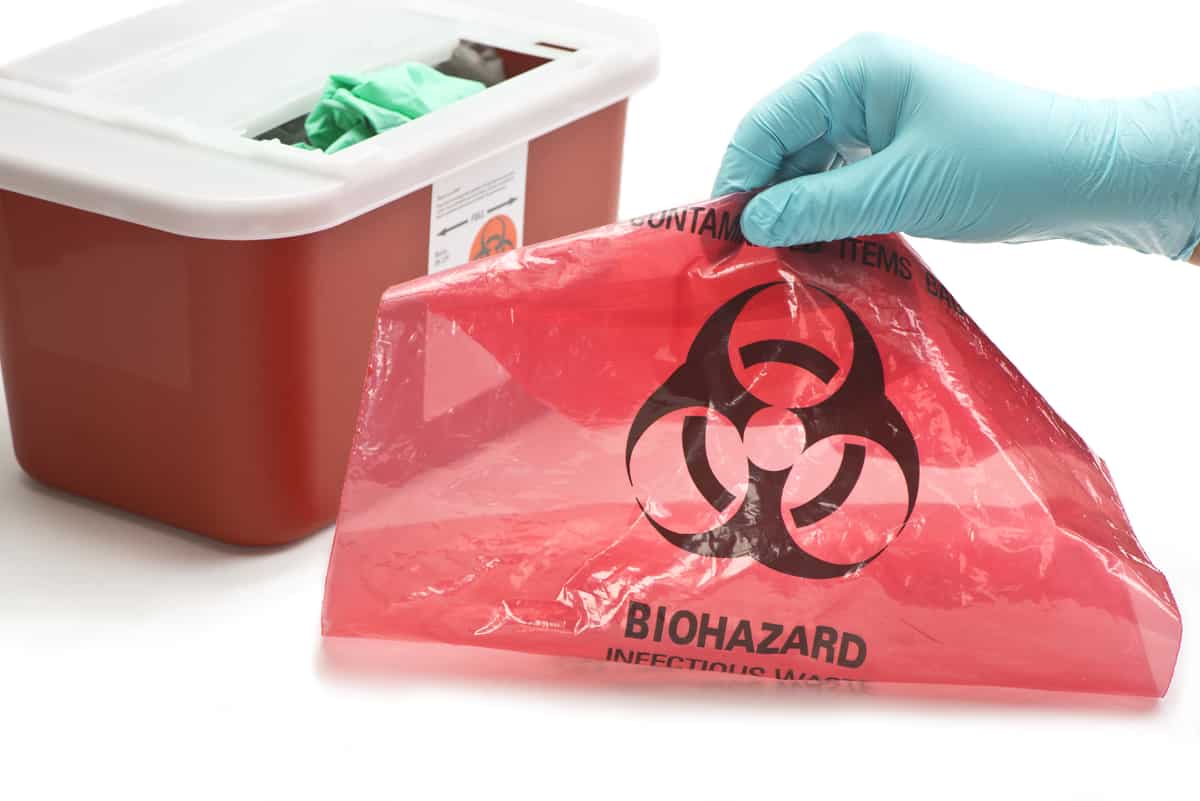Past Cleaning: Ensuring Safety with Expert Medical Waste Removal
Past Cleaning: Ensuring Safety with Expert Medical Waste Removal
Blog Article
Remain Ahead of Regulations: Expert Recommendations on Medical Waste Disposal
In a world where the medical care market is regularly advancing, it is necessary for medical centers to stay in advance of guidelines when it comes to the proper disposal of medical waste. From understanding the different categories of clinical waste to implementing the ideal collection and partition approaches, this discussion will certainly offer beneficial understandings and actionable suggestions to assist centers stay in advance of policies in the ever-changing landscape of medical waste disposal.
Understanding Medical Waste Categories
Comprehending clinical waste categories is necessary for proper disposal and management in medical care facilities. Clinical waste describes any waste created by medical care tasks that may posture a hazard to public wellness or the atmosphere. It is essential to categorize medical waste properly to guarantee its risk-free handling, transportation, disposal, and treatment.
There are a number of classifications of medical waste that medical care facilities need to be accustomed to. The most common categories include contagious waste, pathological waste, sharps waste, pharmaceutical waste, and chemical waste. Each group has specific standards and policies for its appropriate monitoring and disposal.
Transmittable waste includes products polluted with blood or various other physical liquids, such as gloves, gowns, and research laboratory societies. Pathological waste refers to human tissues, body organs, or body components that need special delivery and disposal. Sharps waste consists of made use of needles, syringes, and various other sharp objects that can trigger injury and transfer infections. Pharmaceutical waste makes up ended, extra, or infected medications that need mindful handling and disposal. Lastly, chemical waste includes solvents, anti-bacterials, and various other chemical substances made use of in health care facilities.
Remaining Up-To-Date With Regulatory Adjustments
Staying existing with regulative modifications is essential for medical care facilities to make sure conformity and appropriate administration of medical waste disposal. medical waste removal. With regulations frequently advancing, it is important for healthcare centers to stay up-to-date to avoid charges, penalties, and potential injury to the environment and public wellness
To remain ahead of regulative modifications, health care centers should establish a system for monitoring and monitoring updates. This can be done by registering for regulatory newsletters, attending workshops and seminars, and proactively joining industry organizations. Additionally, facilities must mark a personnel member or group accountable for remaining notified and disseminating information to pertinent stakeholders.
Regular communication with governing firms is likewise crucial. Healthcare facilities must develop partnerships with neighborhood, state, and federal firms to ensure they know any changes in policies that may affect their waste administration methods. This can be done with regular conferences, involvement in public comment durations, and aggressive interaction with governing agencies.
In addition, health care centers ought to take into consideration partnering with waste administration firms that focus on clinical waste disposal (medical waste disposal services with WasteX). These companies are often well-versed in the current guidelines and can offer guidance and assistance to ensure compliance
Carrying Out Correct Collection and Partition Approaches
To successfully manage medical waste disposal, healthcare centers must develop correct collection and partition techniques based on regulatory guidelines. Implementing these methods makes certain the safe handling and disposal of possibly hazardous products, shields the setting, and lessens the danger of injuries and infections to health care employees and the public.
Correct collection and segregation approaches entail making use of assigned containers and labeling systems. Health care facilities ought to supply plainly classified containers for different sorts of medical waste, such as sharps, transmittable waste, pharmaceutical waste, and non-hazardous waste. These containers must be color-coded and clearly significant to avoid confusion and advertise simple recognition.
In addition, medical care facilities need to train their staff on the appropriate treatments for collecting and segregating clinical waste. This consists of educating them on the various sorts of waste, the suitable containers to make use of, and the significance of complying with policies and guidelines. Regular training sessions and refresher programs must be performed to make sure that employee stay up-to-date on best techniques.
Furthermore, health care centers ought to establish a system for normal collection and disposal of medical waste. This might include partnering with licensed waste management business that concentrate on medical garbage disposal. These business will certainly make certain that the accumulated waste is carried and disposed of in compliance with governing requirements.
Picking the Right Disposal Approaches

Incineration is one of the most typical and efficient methods for throwing away particular sorts of medical waste, such as pathological waste and sharps. It involves the controlled burning of waste at heats, reducing it to ash. Nonetheless, incineration can release harmful contaminants into the air and add to air contamination.

Other disposal methods consist of chemical therapy, microwave therapy, and landfilling. Chemical treatment includes making use of chemicals to decontaminate and neutralize the waste. Microwave treatment uses microwave energy to warmth and decontaminate the waste. Landfilling involves burying the waste in a designated landfill location (medical waste disposal services with WasteX). Nonetheless, landfilling must be the last option due to the possible danger of contamination to soil and groundwater.
Guaranteeing Compliance With Documents and Training
After meticulously considering the appropriate disposal approaches for medical waste, health care centers should make sure conformity with policies and minimize environmental influence by applying efficient documentation and training procedures. This step is crucial in preserving a lasting and secure environment for both medical care workers and the public.

Healthcare employees who handle clinical waste ought to receive suitable training on waste segregation, taking care of, and disposal procedures. By supplying thorough training, health care facilities can encourage their personnel to make informed decisions and reduce the threat of inappropriate waste disposal.
Verdict
To conclude, remaining ahead of regulations in medical waste disposal is crucial for health care centers. medical waste removal services. Understanding the various categories of clinical waste, remaining upgraded with regulative changes, implementing correct collection and segregation approaches, picking the ideal disposal approaches, and guaranteeing medical waste disposal services with WasteX conformity through documents and training are all important actions. By following these guidelines, medical care organizations can properly dispose and take care of of clinical waste in a liable and secure way
From understanding the various classifications of medical waste to executing the best collection and segregation techniques, this conversation will certainly give useful understandings and workable suggestions to help centers stay in advance of regulations in the ever-changing landscape of medical waste disposal. - medical waste disposal services with WasteX
The most typical classifications consist of infectious waste, pathological waste, sharps waste, pharmaceutical waste, and chemical waste. Health care facilities ought to supply plainly classified containers for various types of clinical waste, such as sharps, contagious waste, pharmaceutical waste, and non-hazardous waste. Healthcare facilities need to develop a comprehensive system to videotape and track all facets of medical waste disposal, including kinds of waste generated, quantities, and disposal methods made use of. Medical care employees that handle medical waste needs to obtain suitable training on waste partition, handling, and disposal treatments.
Report this page